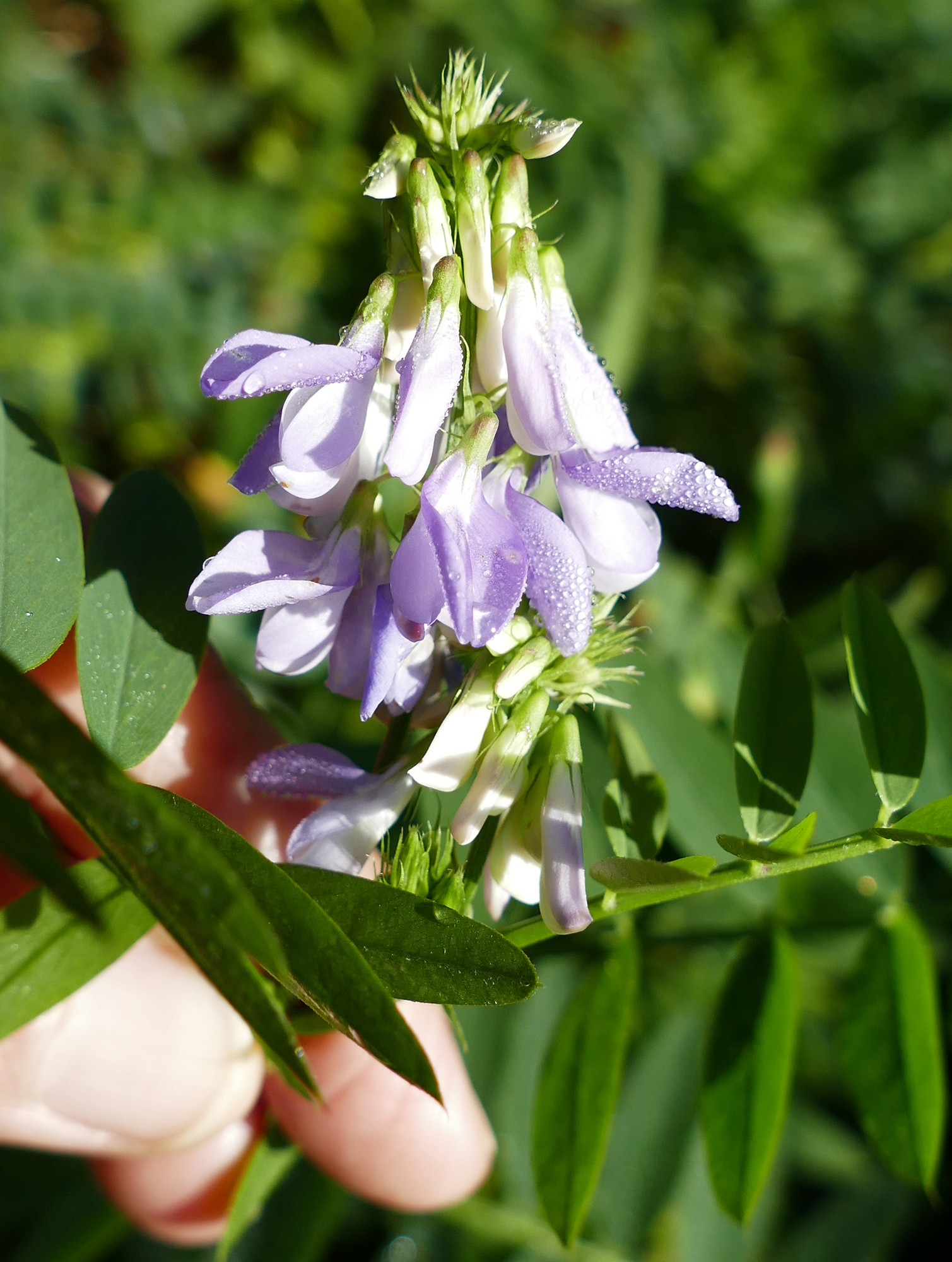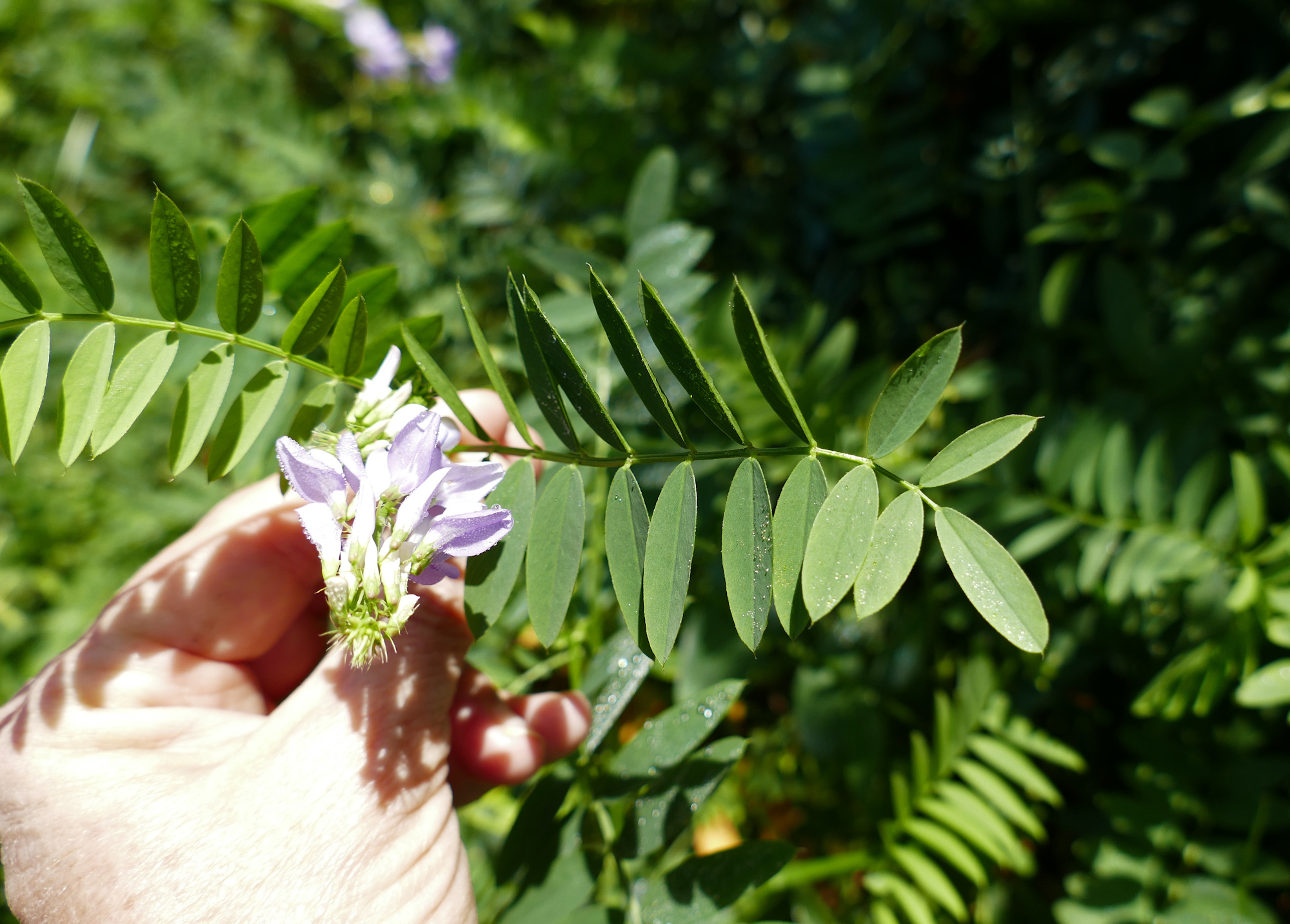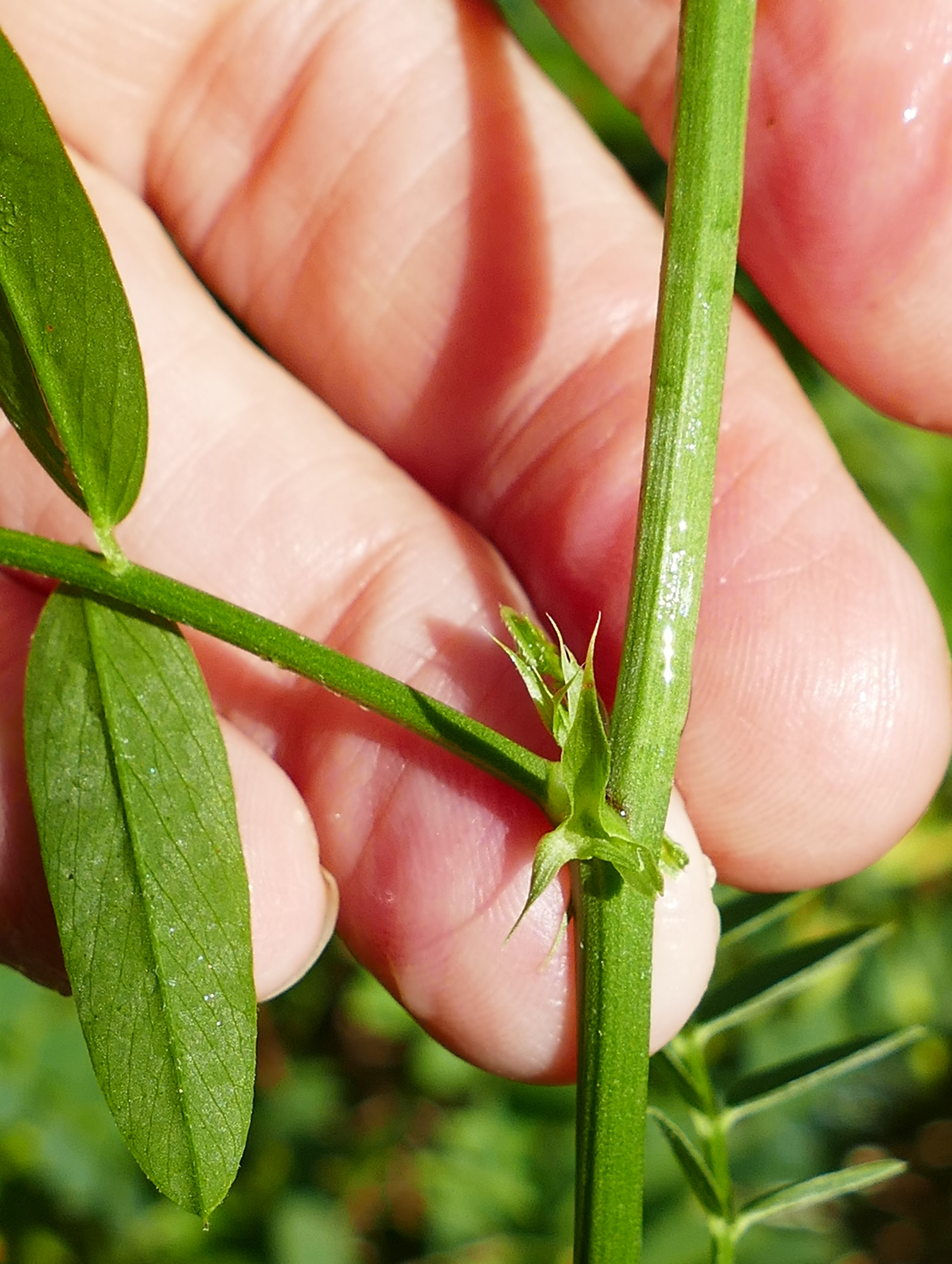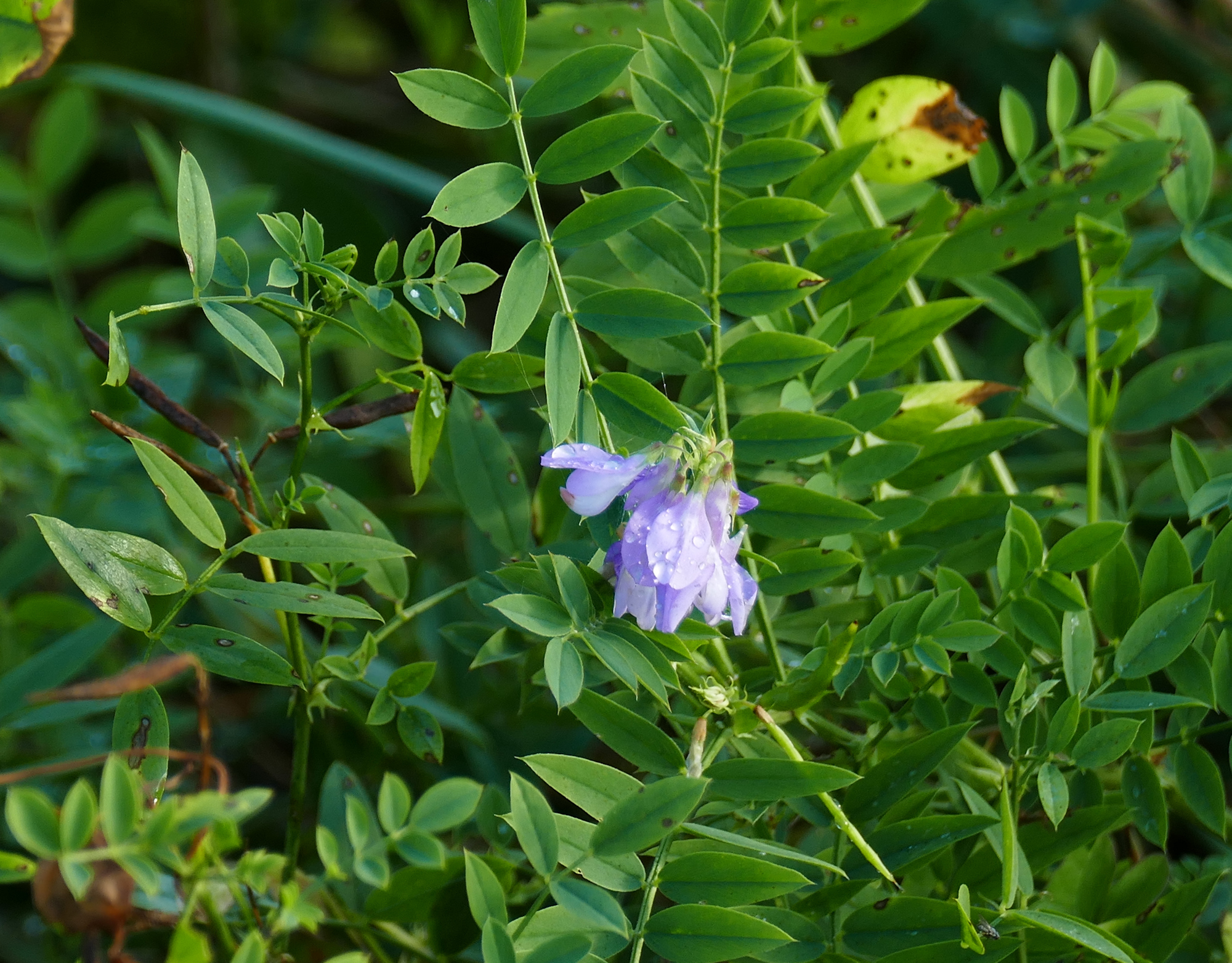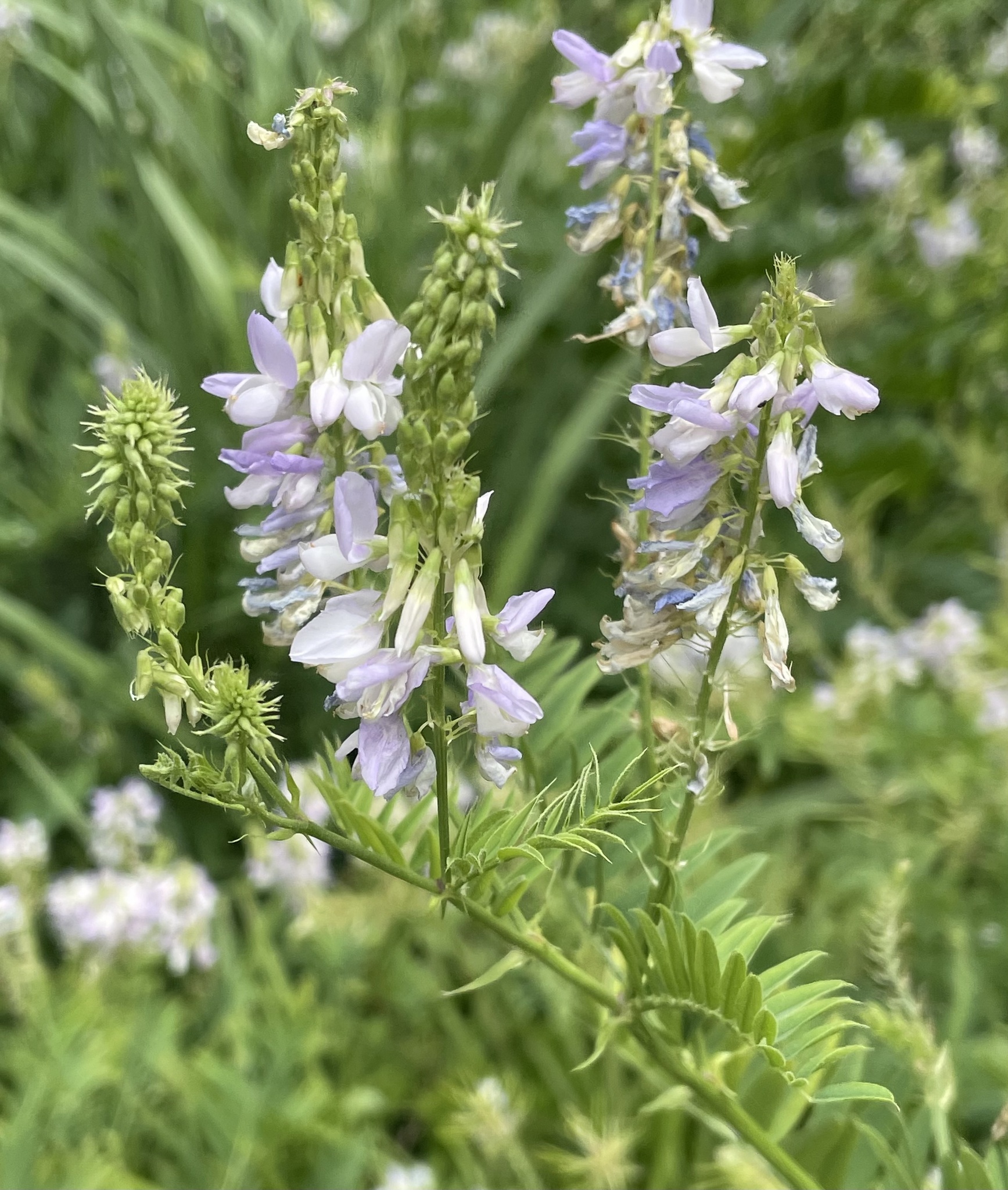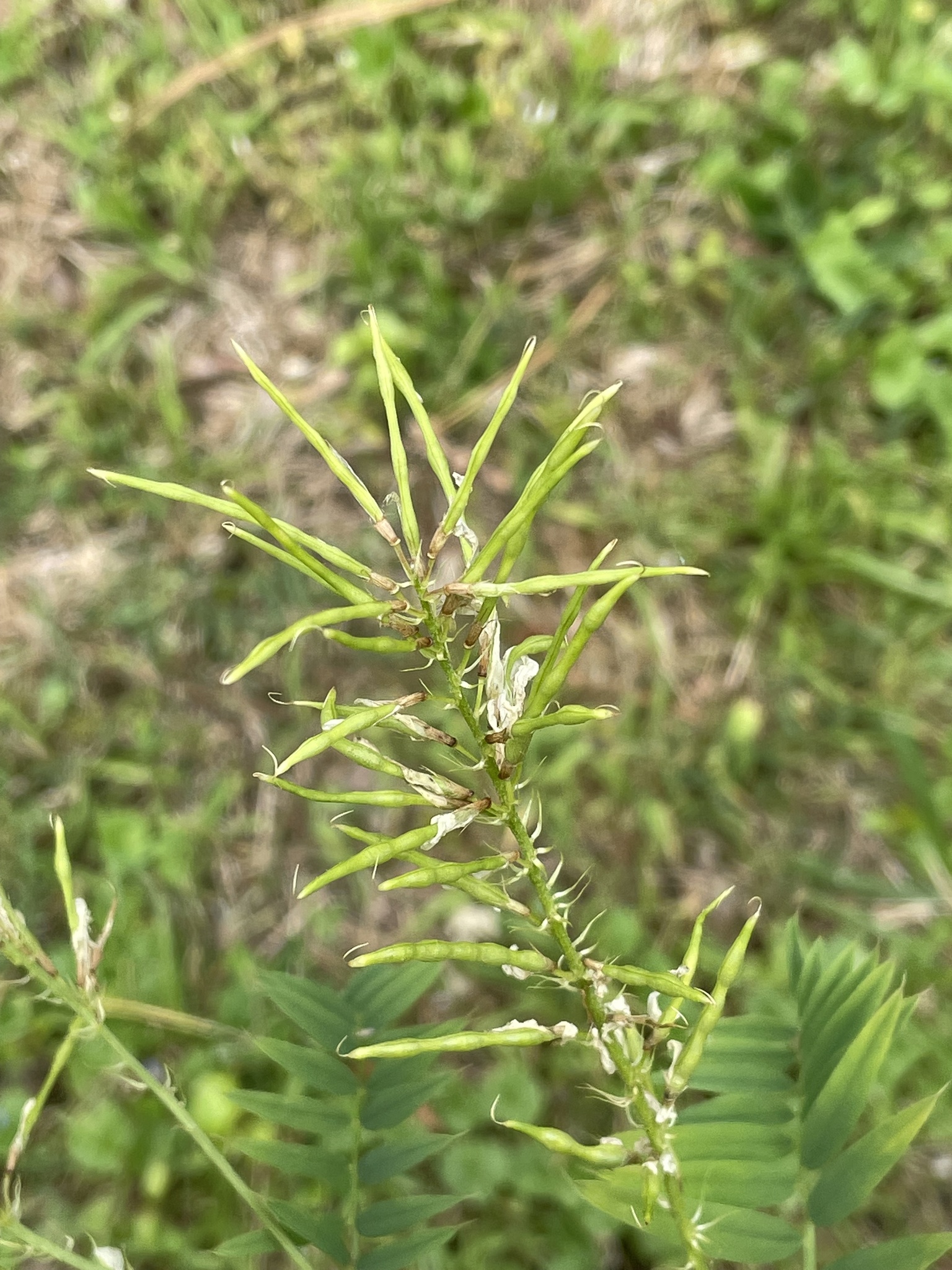Map Snapshot



8 Records
Status
"Native of the Mediterranean region; Europe and Africa" (Reed, 1964).
Seasonality Snapshot
Source: Wikipedia
| Galega officinalis | |
|---|---|

| |
| Scientific classification | |
| Kingdom: | Plantae |
| Clade: | Tracheophytes |
| Clade: | Angiosperms |
| Clade: | Eudicots |
| Clade: | Rosids |
| Order: | Fabales |
| Family: | Fabaceae |
| Subfamily: | Faboideae |
| Genus: | Galega |
| Species: | G. officinalis
|
| Binomial name | |
| Galega officinalis | |
| Synonyms[1] | |
|
List
| |
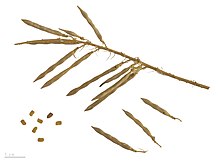
Galega officinalis, commonly known as galega[2] or goat's-rue,[3] is a herbaceous plant in the subfamily Faboideae of the legume family Fabaceae.[4] It is native to parts of northern Africa, western Asia and Europe, but is widely cultivated and naturalised elsewhere.[4][2] The plant has been extensively cultivated as a forage crop, an ornamental, a bee plant, and as green manure.[4][5]
G. officinalis is rich in galegine, a substance with blood glucose-lowering activity and the foundation for the discovery of metformin,[6] a treatment for managing symptoms of diabetes mellitus.[7] In ancient herbalism, goat's-rue was used as a diuretic.[8] It can be poisonous to mammals, but is a food for various insects.[4]
Etymology
[edit]The English name "goat's-rue" is a translation of the Latin Ruta capraria, used for the plant in 1554 when it was considered to be related to Ruta graveolens, or common rue.[9] The Latin specific epithet officinalis refers to plants with some medicinal, culinary or herbal attributes.[10]
Galega bicolor is a synonym.
Distribution and habitat
[edit]Widely distributed throughout temperate regions of the world, predominantly in Europe, the plant is a hardy perennial that blooms in the summer months on grasslands, wetlands, and riverbanks, and is classified as an invasive weed in many parts of North America.[4][5] It has also been found in South America, North Africa, Pakistan, Turkey, and New Zealand.[4][5]
In 1891 in the United States, Galega officinalis was introduced experimentally at Utah State University for potential use as a forage crop, but escaped cultivation and is now an agricultural pest.[4] As a result, it has been placed on the Federal Noxious Weed List in the United States. It was collected in Colorado, Connecticut and New York prior to the 1930s, and in Maine and Pennsylvania in the 1960s, but the populations appear to have died out.[5]
Chemistry and herbalism
[edit]Although not thoroughly studied with 21st century methods, G. officinalis has been analyzed for its constituents, which include galegine, hydroxygalegine, several guanidine derivatives, such as 4-hydroxygalegine flavones, flavone glycosides, kaempferol, and quercetin.[7][8] In addition to its purported effect to lower blood glucose levels and induce diuresis, goat's rue was used as a herbal tonic in folk medicine practices of medieval Europe to treat bubonic plague, worms, and snake bites.[7][8]
Relation to metformin
[edit]Once used in traditional medicine over centuries, G. officinalis is at the foundation of the biguanide class of antidiabetic drugs, which also included phenformin and buformin (both discontinued).[7][11]
G. officinalis contains the phytochemicals, galegine and guanidine, both of which decrease blood sugar, but were discovered to cause adverse effects in human studies.[7][11] The study of galegine and related molecules in the first half of the 20th century led to development of oral antidiabetic drugs.[7][11] Research on other compounds related to guanidine, including biguanide, led ultimately to the discovery of metformin (trade name, Glucophage), used in the 21st century for management of diabetes by decreasing liver glucose production and increasing insulin sensitivity of body tissues.[7][12]
Adverse effects
[edit]Goat's rue may interfere with prescribed diabetes drugs, iron absorption, and anticoagulants.[8] It may cause headache or muscular weakness, and its safety during pregnancy or breastfeeding is unknown.[8]
Gallery
[edit]-
Galega officinalis, a natural source of galegine
-
Galega officinalis - from Thomé, Flora von Deutschland, Österreich und der Schweiz 1885
-
Galega officinalis - Hortus Eystettensis, Eichstätt
-
Top side of leaf
-
Bottom side of leaf
References
[edit]- ^ "Galega officinalis L." Plants of the World Online. Royal Botanic Gardens, Kew. Retrieved 14 May 2024.
- ^ a b "Galega officinalis". Germplasm Resources Information Network. Agricultural Research Service, United States Department of Agriculture. Retrieved 8 July 2014.
- ^ BSBI List 2007 (xls). Botanical Society of Britain and Ireland. Archived from the original (xls) on 2015-06-26. Retrieved 2014-10-17.
- ^ a b c d e f g "Galega officinalis (goatsrue)". Invasive Species Compendium, CAB International. Retrieved 2017-12-23.
- ^ a b c d Lasseigne, Alex (2003-11-03). "Invasive Plants of the Eastern United States: Galega sp". US Department of Agriculture. Retrieved 2017-12-23.[permanent dead link]
- ^ Shenfield, G (April 2013). "Metformin: Myths, misunderstandings and lessons from history". Australian Prescriber. 36 (2): 38–39. doi:10.18773/austprescr.2013.017.
- ^ a b c d e f g Bailey CJ, Day C (2004). "Metformin: its botanical background". Practical Diabetes International. 21 (3): 115–117. doi:10.1002/pdi.606. S2CID 208203689.
- ^ a b c d e "Goat's rue". Drugs.com. 2009. Retrieved 23 December 2017.
- ^ Oakeley, Henry; Knowles, Jane; de Swiet, Michael & Dayan, Anthony (2015). "Galega officinalis". A Garden of Medicinal Plants. Little, Brown for the Royal College of Physicians. ISBN 978-1-4087-0625-1.
- ^ Harrison, Lorraine (2012). RHS Latin for Gardeners. United Kingdom: Mitchell Beazley. ISBN 978-1845337315.
- ^ a b c Witters L (2001). "The blooming of the French lilac". Journal of Clinical Investigation. 108 (8): 1105–7. doi:10.1172/JCI14178. PMC 209536. PMID 11602616.
- ^ Nathan DM, Buse JB, Davidson MB, Ferrannini E, Holman RR, Sherwin R, Zinman B (2009). "Medical Management of Hyperglycemia in Type 2 Diabetes: A Consensus Algorithm for the Initiation and Adjustment of Therapy: A consensus statement of the American Diabetes Association and the European Association for the Study of Diabetes". Diabetes Care. 32 (1): 193–203. doi:10.2337/dc08-9025. PMC 2606813. PMID 18945920.
External links
[edit]- Taxonomy on NCBI (National Library of Medicine).
- Noxious Weed USDA Noxious & Invasive Weeds.
